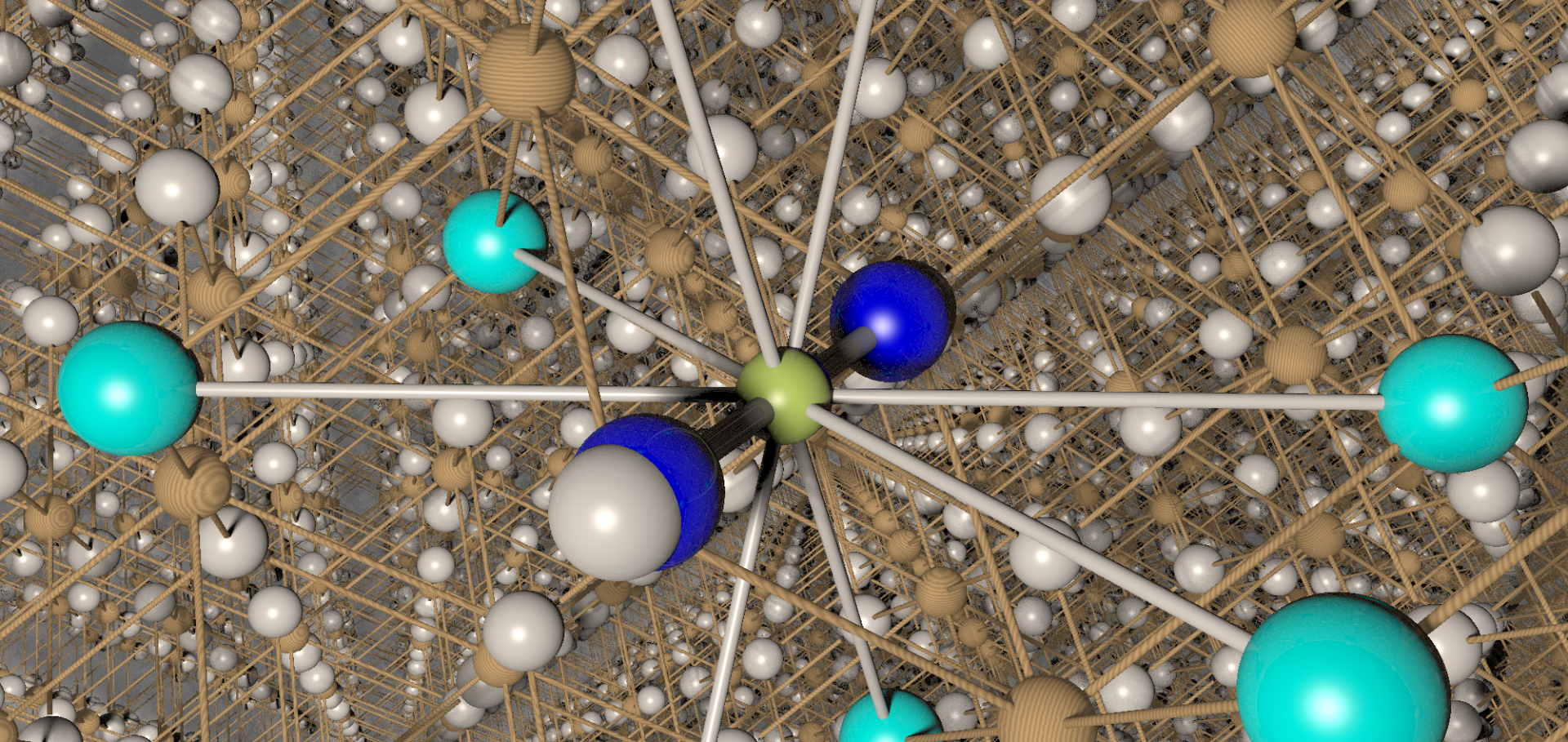Muon studies of molecular magnetism
PHYSICA B 289 (2000) 115-118
Abstract:
We present the results of mu SR experiments on a variety of molecular magnetic materials, either purely organic or combinations of transition metal ions and organic groups, which have been recently prepared. In a purely organic metamagnet, tanol suberate, we have observed a spin precession signal with a temperature dependence which has provided evidence of the two-dimensional nature of the antiferromagnetic ground state. In a family of dicyanamide-based molecular magnets with ordering temperatures of up to 21 K, and in a ferrimagnetic cobalt hydroxide, mu SR has been used to study the temperature dependence of the spin fluctuations. (C) 2000 Elsevier Science B.V. All rights reserved.Very low-temperature muon relaxation in an organic spin-Peierls compound
PHYSICA B 289 (2000) 145-148
Abstract:
We have observed strong muon-spin relaxation (CBR) in the spin-Peierls compound MEM(TCNQ)(2) at temperatures down to 39 mK. We attribute this relaxation to the creation of defect spins by the muon. Furthermore, we observe a slowing down of spin fluctuations as the spin-Peierls energy gap opens, and we relate this effect to the size of the energy gap. (C) 2000 Elsevier Science B.V. All rights reserved.mu SR of conducting and non-conducting polymers
PHYSICA B 289 (2000) 625-630
Abstract:
mu SR has been used to study a variety of polymers with very different electronic properties. In conducting polymers, the muon-generated radical states take the form of highly mobile polarons. Muon spin relaxation has been used to study the mobility of these polarons and to measure the temperature dependence of their intra-chain and inter-chain diffusion rates. it is found that the transport properties are strongly influenced by the librational ring modes of the phenylene rings in these polymers. In contrast, the muon-generated radical states in non-conducting polymers such as polybutadiene remain localised near the site of the muon. High field muon spin rotation, avoided level crossing resonance and longitudinal relaxation studies have been made, using the muon radical state as a probe of the dynamical properties of the polymer. Dramatic changes in the mu SR signals are seen on going through the glass-rubber transition, as various dynamical degrees of freedom become frozen out. Additional information about the stability of the muon radical states on the microsecond timescale has also been obtained using RF muon spin rotation techniques. Using time-delayed RF resonance of the diamagnetic state at the RIKEN-RAL muon facility, the transition rate between paramagnetic and diamagnetic states could be studied as a function of temperature. (C) 2000 Elsevier Science B.V. All rights reserved.Muon spin relaxation in NaV2O5
PHYSICA B 284 (2000) 1633-1634
Abstract:
Muon-spin relaxation measurements have been carried out on NaV2O5 in the temperature range from 6 up to 300 K, through the spin-Peierls transition temperature at T-SP = 33 K. The relaxation is fitted throughout to a stretched exponential, exp( - (lambda(T)t)(beta(T))). The parameter beta is greater than 1 above the transition, but falls surprisingly to below 1/3 at 6 K, as usually observed in frustrated magnetic systems. (C) 2000 Elsevier Science B.V. All rights reserved.Muon spin relaxation in NaV2O5 in its spin-Peierls phase
PHYSICA B 281 (2000) 648-649


